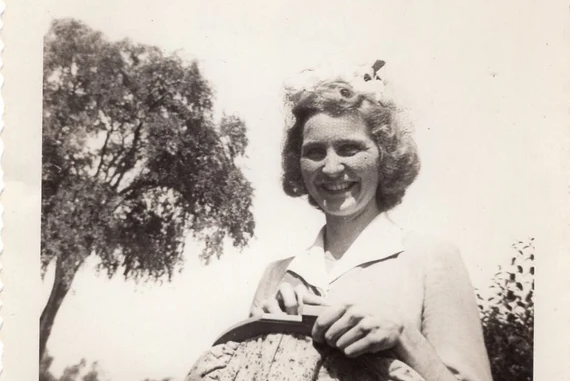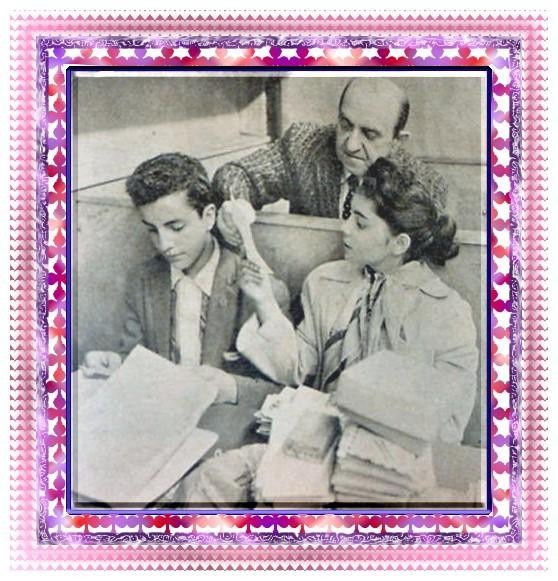
It was a quiet Tuesday afternoon in the fall of 1959 when I witnessed something I hadn’t seen in nearly five months: my mother’s smile.
She was standing in the kitchen, drying dishes with that same hollow look she had worn since my father’s passing that spring. The house had grown so still in his absence. The music, once a constant companion in our home, had disappeared. My siblings and I tiptoed through the days, afraid of breaking the heavy silence that had settled around us.
But that afternoon, American Bandstand flickered on in the living room, as it always did around 4 p.m. I had turned it on out of habit more than anything. I wasn’t expecting anything different. But then, Arlene Sullivan and Kenny Rossi took the floor.
And something shifted.
A Dance More Powerful Than Words
They weren’t doing anything flashy. No spins. No dramatic dips. Just two teenagers, moving in soft rhythm to a ballad I can’t even remember now. But I remember them. The way Arlene looked so at ease, her head tilted slightly. The way Kenny guided her gently, never pulling, never pushing—just gliding, steady and sure.
It was like watching kindness in motion.
I didn’t even realize my mother had stepped into the doorway until I turned and saw her. She wasn’t crying. She wasn’t speaking. She was just watching—eyes fixed on the screen, her hand frozen midair with a dish towel still in it.
And then… she smiled.
Just barely. Just enough.
But it was the first time I had seen her face soften since we buried Dad.

Why That Moment Mattered
People often talk about how music heals. But for us, that healing came not just from sound, but from movement—gentle, honest, wordless movement. The kind Arlene and Kenny gave us every day.
They weren’t stars in the Hollywood sense. They didn’t need to be. Their dancing wasn’t performance—it was presence. And that day, their presence filled our living room and cracked open something we thought was gone forever.
Later that night, my mother sat at the kitchen table a little longer. She asked what my sister was learning in school. She folded the laundry and hummed—hummed, after all those months of silence.
We didn’t talk about the smile. But we all noticed.

A Tribute to Something Quiet and True
Arlene Sullivan and Kenny Rossi weren’t the most dramatic dancers on Bandstand, but they were the ones who made you feel something. They moved like they trusted each other. Like they understood the value of softness.
That kind of connection is rare. Especially in a time when so much of youth was about standing out, they stood together—calm, poised, graceful.
Their dancing reminded us that you didn’t have to be loud to be heard. You didn’t have to spin to be seen. You just had to show up with kindness.
And sometimes, that kindness could reach through a television screen and touch the heart of a grieving mother.
“She didn’t know them,” I’d later tell a friend. “But it felt like they were dancing just for her.”
Years Later, We Still Remember
My mother passed away in 2002. But even in her later years, whenever someone mentioned American Bandstand, she would smile softly and say, “That girl… Arlene. And the young man… Kenny. Weren’t they lovely?”
She remembered them. Not because they were famous. Not because they were flashy. But because, on the day her grief had felt endless, they reminded her what it looked like to breathe again.
And I remember them too—for the same reason.

A Gentle Thank You
There are some moments in life that stay folded in your memory like a love letter you never sent. That smile from my mother—brief, fragile, but real—was one of them.
So this is my letter, decades too late, to the dancers who never knew what they gave us.
Thank you, Arlene and Kenny. For your grace. For your quiet. For showing my mother how to smile again.
And to anyone reading this who remembers the way a single dance could change a whole day—maybe even a whole life—you understand. You were there too.
📝 Share your story with us here: